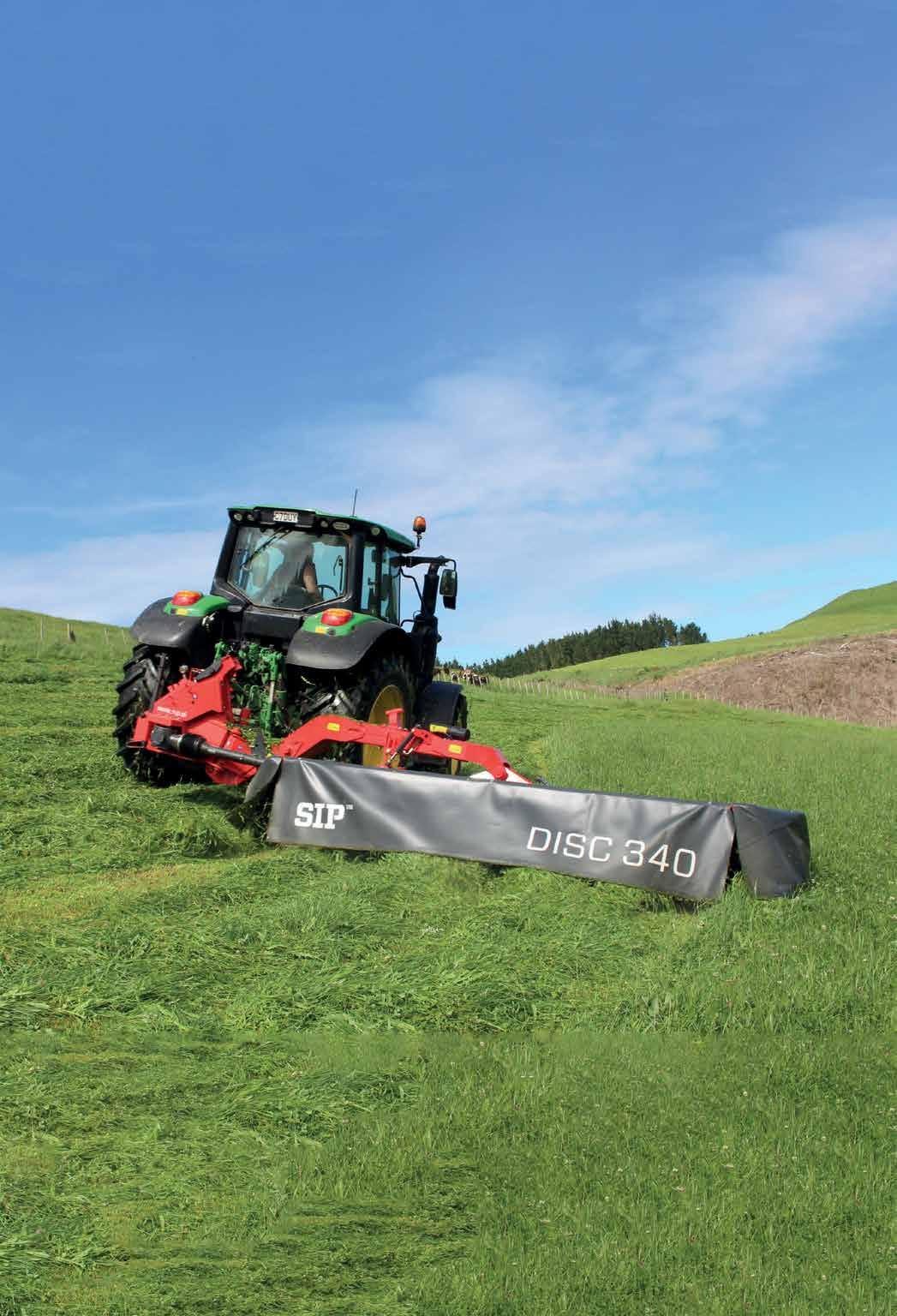










Take the guesswork out of pregnancy predictions with a milk pregnancy test. Conveniently using the milk from a routine herd test, you’ll get the clear answers needed to help make management decisions during the summer months.
You can test for pregnancy just 28 days after mating and they won’t even know you’re running a test. It’s that easy and non-invasive. Choose to focus on a few suspects or cover the whole herd for total reassurance. Adding milk pregnancy testing to a herd test is one of the smart moves you can make today, while ensuring you’re breeding from the best and accelerating your rate of genetic gain.
Talk to your Agri Manager today about setting up regular herd testing with milk pregnancy testing

There's always room for improvement
THE COUNTRY’S second largest milk processor is on the hunt for more farmer suppliers in Waikato.
Open Country Dairy, which has recently commissioned a new cheese capacity upgrade and lactose plant at its Waharoa facility, needs more milk to fill it.
In a bid to lure suppliers from Fonterra, Open Country is also offer ing a new milk payment option, sim ilar but superior to the co-op’s, for new and existing Waikato suppliers.

It’s new ‘milk price plus’ initia tive guarantees farmers 5c/kgMS more than they would have earned on Fonterra’s farmgate model and a better advance rate.
The payment system will be simi lar to what Fonterra offers – monthly advance rate paid to farmers plus a wash-up payment after the end of the season.
Open Country currently also has a high cash flow model that pays its suppliers in full over four instal ments in a season, which will also be on offer.
Open Country chief executive Steve Koekemoer says the company is putting two payment options before Waikato farmers because some farmers are used to working around traditional farmgate milk price model based on the markets.
“We currently pay our farmers quarterly in full which follows the market pricing and delivers cash
back to the farmers quicker. We have always believed that farmers deserve to get their money back faster, ” he told Dairy News
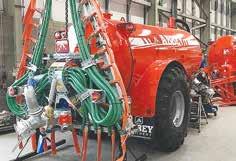
“Many farmers are used to oper ating under the traditional payment system used by other processors.
OPEN COUNTRY Dairy suppli ers will receive $9.37/kgMS for milk supplied between June and September this year.
Farmer suppliers will be paid in full this month.
The price is 2c above last season’s average milk price of $9.35/kgMS, a record payout by Open Country.
The company, which pays suppliers in full via four instal
“So, we are offering both options as a limited time offer to Waikato farmers.”
Waikato region is the most com petitive region. Synlait, Open Coun try Dairy and Fonterra operate milk plants and will soon be joined by
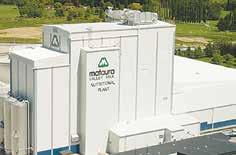

Olam which plans to commission its new plant at Tokoroa in August. Happy Valley Milk is building a milk plant at Otorohanga but the project has been delayed by a lack of funds.
@dairy_news facebook com/dairynews
ments during the year, paid $10.06/kgMS as January settle ment period and $9.84/kgMS in May.
Open Country chief execu tive Steve Koekemoer says a string of very strong milk prices is testament of the way the business has performed.
“The business has per formed extremely well and this is shown in our milk payments

to farmers.”
Global dairy prices have receded in recent months and Koekemoer says demand has been weaker than antici pated.
Demand in China expected to bounce back from Covid lockdowns, prices should come back.
“We anticipate prices to rise in the medium term,” he says.
FORMER FONTERRA director Donna Smit’s sixyear tenure on the board can be best described as a game of three halves.
There was the baptism of fire at the start, the reset in the middle and then Fonterra entering a “future facing phase”.
The Edgecumbe farmer stepped down at the co-op’s annual meet ing in Rotorua earlier this month, confident that the company is in an excel lent position.
Speaking to Dairy News on her farm, Smit recalled her first day as a director.

“It started with a bap tism of fire, with my first day at Fonterra being something I will never forget,” she tells Dairy News
She quickly adds that she’s pleased to say that things are a lot better now.
“Everything has changed: the strategy, the culture, the people, the financial results – they had to.”
Smit believes a lot of the “less than ideal behav iours” were a function of the stress that everyone was under.
There were a few off shore investments that were not performing.
Fonterra had just come through a five year period of milk supply growth, facing a 25% increase in milk being processed, loaded and sold to 150 markers worldwide.
The balance sheet was squeezed, building large manufacturing assets ahead of the milk supply forecast, she recalls.
The co-op had also just come through a cap ital structure change to Trading Among Farmers (TAF), which had divided the shareholder base and not raised a cent of capi tal for Fonterra’s balance sheet.
“We had a ‘three V’ strategy, which did not resonate with its farmer supplier owners, to be globally relevant by moving volume to value at velocity.
“We had had the Sanlu issue and then the false positive WPC80 precau tionary recall.
“We had competi tor processors increas
ing their footprints in NZ. Fonterra’s credit rating had gone from A+ to A. We had the very unpop ular 90 day supplier pay ment terms.
“The growth in the dairy industry had meant not only Fonterra’s bal ance sheet was highly geared, but the dairy industry was also highly geared.”
Smit says there were “dominant personalities” that appeared not hear an alternative view. Direc tors that challenged were treated badly: one director Leonie Guiney couldn’t re-contest and lost her place for a year before shareholders brought her back.
“Everyone was doing their best but there were layer upon layer of issues and the culture reflected this,” she says.
Then came the “reset” where Smit felt the direc tors were like commercial cleaners.
There were wholesale changes to the board and management.
New indepen dent directors Scott St John and Bruce Hassall and new farmer direc tors joined the board, long-time director John Monaghan had to step in as interim chair and a few years later Peter McBride took over as chair.
Fonterra also appointed Miles Hurrell
as the new chief execu tive and Marc Rivers as new chief financial officer. A new auditor was also appointed.
There were changes on how the company oper ated: a new strategy to focus on New Zealand milk was announced, new dividend and debt gearing policies were announced and a new risk appetite.
The function of the Shareholders Council was reviewed.
Smit notes that during this time Fonterra posted its first loss.
But she points out that although the co-op was trading at a profit, it had to write down the book value of some offshore
assets (China Farms and Beingmate, DPA Brazil, Fonterra brands NZ and Australia) and there was the Danone settlement. “Although this was a dif ficult period, I believe the owners of the busi ness appreciated the new openness and transpar ency,” she says.
But it wasn’t all gloom and doom.
There were shin ing lights: the Foodser vice business in China was experiencing excel lent growth and returns, says Smit.
“Our balance sheet was strengthening with a better dividend policy, and asset sales funds were being used to reduce debt.
“The risk appetite statement made a real difference, and the post investment reviews are driving accountability.
“Our annual finan cial statements even won a communications award and a gold medal at the Australasian Reporting Awards.
“There were big changes to the notes with better explanations of how valuations were cal culated. The road show presentations were short ened and there was more time allocated for ques tions. Price relativities and their impact on Fon terra’s earnings are clearly reported.”
Smit believes Fonterra then moved into a “future facing Fonterra” stage.
“We addressed the capital structure and the potential fund size exceeding the pre-set guidelines with the new Flexible Capital Structure proposal, which is before Parliament right now.
“Fonterra’s Long Term Aspiration blueprint to 2030 was released which sets Fonterra up for the future. It not only shows the co-op’s strategy, focus on NZ milk, to lead in innovation & science, and to lead in sustain ability, the best thing is it has the financial metrics which strengthens Fonter ra’s accountability to its farmer shareholders and unit holders.”
Smit says it’s been a privilege to serve on the Fonterra board.
“I would like to thank all those who have sup ported me on this jour ney.”
She remains excited about the innovation space – especially some of the items in the pipeline with the partnership with Massachusetts Institute of Technology (MIT) and Professor Ian Hunter.
“The Nutritional Sci ence strategy, which will focus on moving farmers’ milk up the value chain, could really move the dial,” she says.
Rural people deserve a break. They need better, more focused political representation. They need a party dedicated to creating a less regulated, more understanding environment where they can get on with business. They are 12% of our population, but generate 82% of our total export income – and very importantly... they FEED US ALL!
HeartLandNZ is that party. It is not just another party of the right splitting National’s precarious vote. Heartland has a unique gameplan that gives rural New Zealand more MP’s – MP’s committed to the provinces and their wellbeing.
Heartland is the ‘additional seats’ strategy Party that leverages from the little known ‘overhang rule’ already within the MMP Constitution. Under the ‘overhang rule, Parliament actually has to create extra seats for candidates who win their electorate seat but get essentially no party vote.
While the other small parties scramble to steal votes essentially off of National’s party vote, HeartLandNZ
stands alone strongly suggesting you give your party vote to National or ACT while you give your electorate vote to the Heartland candidate. National loses nothing because their candidates stay in Parliament on the list. The six or eight HeartLandNZ MP’s will be given extra ‘overhang’ seats and Parliament will end up with 126 or 128 seats. A National/ ACT coalition will have those extra six or eight MP’s strongly boosting their chances of forming a government.
Based on current polling the Left and the Right could end up splitting the 120 List seats very evenly. The Maori Party with its extreme views on racial division or NZ First who put the current anti-rural Labour lot in power in the first place could hold the balance of power and regional New Zealand could end up out in the cold again struggling for recognition and a strong voice.
When you give your Electorate Vote to HeartLandNZ and then give your Party Vote to National or Act you will get 2 MP’s in your electorate. HeartLandNZ will be solely focused on the needs of
• People coming to realise how simple it is for HeartLandNZ’s proposal to split your vote the right way and produce extra ‘overhang’ MP’s solely focused on benefitting regional New Zealand.
• National and ACT recognising how the HeartLandNZ Party with the electorate vote only strategy could be their best insurance for winning in 2023. It is time for regional New Zealand to be strategic and smart.
• The ‘Wasted Vote’ scenario.
Small right wing parties taking List votes off the National or ACT and failing to get any MP’s elected. These ‘wasted votes’ are actually split between the left and right parties effectively taking half a vote off the right and giving half a vote to the left. They have given the left a full
vote advantage – the opposite of their intentions.
• The ‘Swap Out’ scenario.
Ironically, even if they do get elected their MP’s will just be swapped for National MP’s! They don’t add any MP’s to the right and thus don’t help the right at all.
HeartLandNZ’s ‘extra seatsoverhang’ strategy is a Paradigm shift in small party politics. It is risk free. It doesn’t waste votes and it doesn’t just swap National seats for some minor party seats.
Finally regional and rural voters can have a political party devoted solely to their concerns – Heartland’s strategy is a winning approach, an idea whose time has come!
What will HeartLandNZ MP’s be doing? HeartLandNZ will stand up against unworkable regulations, repealing 3 Waters, rewriting a sensible RMA, halting SNA’s, reversing the unscientific carbon focus on the nation’s food producers.
HeartLandNZ will stand up for
healthy communities, improve rural health, rural schools and childcare services, expand rural mental health initiatives and reinstate ‘Taskforce Green’ environmental work for the unemployed.
HeartLandNZ will stand up for an open and transparent democracy, support free speech, fight against ‘wokeism’, guarantee one law for all New Zealanders and institute binding referenda to hold governments accountable.
For the first time for decades rural NZ can elect MP’s with a very focused commitment on the needs of their community. They can do so while still supporting their preference National or Act with their party vote. It is all about the ‘additional seats’ leverage, and being strategic.
HeartLandNZ - 100% pure Provincial and Rural NZ heartlandnzparty.org.nz See us at National Fieldays, Rural
“It started with a baptism of fire, with my first day at Fonterra being something I will never forget.”Former Fonterra director Donna Smit says it’s been a privilege to serve on the co-op board. regional and rural voters who are the fundamental creators of New Zealand’s wealth.





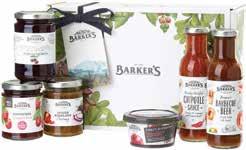
ters is looking forward to helping extract the best performance from the cooperative.

Watters, who took up her board seat at Fonter ra’s annual meeting this month, says she’s hum bled to be chosen by farmer shareholders.
Watters replaces Edge cumbe farmer Donna Smit who retired after serving for six years.
Watters is a co-owner of a 510-cow dairy farm in the Wairarapa. Watters and her husband Andrew won the NZ Sharemilker of the Year title in 2003.
She currently serves as a director of LIC and Met Service. Last month she stepped down as chair of AsureQuality.
Watters says she appreciates the confi dence shareholders have shown in her ability as a governor.
“And, I am fully com mitted to living up to that responsibility,” she told Dairy News. “In addition to a broad range of gov ernance experiences, I will bring good insights around innovation to the
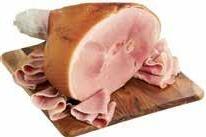
FARMERS STRUGGLING with poor internet connectivity are being urged to take advantage of a new gov ernment scheme.

Federated Farmers telecommunica tions spokesperson Richard McIntyre suggests members sign up for govern ment assistance under the Remote Users Scheme.
“We know from the responses we get from our annual rural connectivity survey that this announcement will be appreciated by a significant number of
farmers and growers,” says McIntyre.
“They are pulling their hair out trying to run a business with bad inter net.”
According to Feds’ own data the assistance on offer could help at least 1 in 3 farmers who have to live with download speeds of less than 10mbps.
This means trading-off time for family internet use, like children doing homework, with mum or dad doing banking, online business compliance and ordering supplies.
“Feds has been working with the Government on this since January and it is a great comfort to us that this scheme appears to offer genuine relief.
“We look forward to working with Government to make sure everyone eligible gets a chance to make the most of the assistance,” he says.
The Remote Users Scheme, announced this month, will equip as many remote households as possible with the connectivity infrastructure needed to access broadband services,
Watters acknowledges
that Fonterra faces sig nificant challenges ahead, with a constrained milk pool, a tightening global financial market which will put pressure on
demand, and a need to focus on driving perfor mance through both the milk price and adding value across Fonterra’s product range.
She adds that the cur rent strategy supports this focus.
Dairy farmers are also facing more challenges around the way they farm.
She says farmers are being increasingly chal lenged to meet require ments around both environmental and finan cial sustainability.
“The opportunity lies in being able to extract value from being part of an industry which is known to have the lowest environmental footprint in the world with regard to dairy production.”
says Digital Economy and Communi cations Minister, David Clark.
“Whilst these locations might be off the grid, it doesn’t mean they can’t be connected to it in some way,” Clark said. “As the global cost of the living crisis puts pressure on New Zealand ers and their families, a reliable con nection will make it easier for remote businesses to operate, pay invoices and network.
“From a social standpoint, this new scheme will also help connect people
to online health services and educa tional tools.”
Crown Infrastructure Partners (CIP) will administer the Remote Users Scheme and will soon be call ing for applications from potentially eligible households and communi ties. A request for proposal from inter net service providers will follow. It is expected that new broadband con nectivity infrastructure for the eligi ble areas and households can begin being built in mid-2023.

Fonterra board table.
“My background in R&D, and in commer cialisation of innovations in not only dairy nutri tion but also other areas
of significance to the dairy industry, will help to enrich both discussions and decision making.
“I am excited about working with both myfellow board directors, and the Fonterra manage ment team to extract the best performance from the
co-operative.”
FEDERATED FARM
ERS have refused to be a part of the industryled He Waka Eke Noa (HWEN) submission to government on agricul tural emissions.
Feds President Andrew Hoggard told Dairy News that while they agree with some of the narrative in the overall HWEN sub mission, they decided to go their own way for fear
their message around tar gets might be construed as being diluted in some way.
“In the past we have agreed to words and it’s all got watered down,” he says.
“We wanted to make it clear that we would not agree to anything unless there was a review of the targets. Feds didn’t want them to say you have agreed to this in the joint submission so we will go with that,” he says.
In the past Hoggard
had made it clear that Feds wanted to “go hard” in its submission, but acknowledges that some industry organisations have also gone quite hard in their individual submis sions.
“At this point in time, my feeling and the feel ing of others is that we needed be crystal clear in what we are saying,” he says.
It should be pointed out that DairyNZ and B+LNZ have also made separate submissions in
Beef + Lamb New Zealand Ltd (B+LNZ) give notice that nominations are now open for B+LNZ Directors

Written remits for the 2023 Annual Meeting are now being accepted.
Under section 42 of the B+LNZ constitution, two electoral district directors will retire by rotation at the annual meeting. This year, George Tatham (Eastern North Island) and Andrew Morrison (Southern South Island) must retire by rotation but may stand for re-election. Andrew Morrison has indicated he will be seeking re-election in 2023. George Tatham will be retiring after nine years as a director.
Nominations are being called to fill two Board of Director vacancies, one for each of the following electoral districts:
• Eastern North Island (ENI)
• Southern South Island (SSI)
The successful candidates for these director positions will also be appointed to the board of directors for the New Zealand Meat Board.
Remits are called for under section 12 of the Second Schedule: Proceedings at Meetings of the B+LNZ constitution. Remits are a matter that the proposing farmers are raising for discussion and resolution at the annual meeting.
All nominations and written remits must be made on the official forms. The official forms and information regarding the elections are available by:
• www.electionz.com/BLNZ2023R
• emailing iro@electionz.com
• phoning 0800 666 035
Remit forms are also available from B+LNZ at 0800 233 352 or enquiries@beeflambnz.com.
All nominations and written remits must be received by the Returning Officer by 5pm on Friday 9 December 2022.
Voting for the B+LNZ Board, annual meeting resolutions and remits (if any) will all be conducted at the same time.
Voting will be conducted by postal and internet voting, with voting papers being posted to all farmers on the B+LNZ electoral roll. The mailout of the voting packs is expected to be on Tuesday 14 February 2023. B+LNZ Board elections will close on election day and postal and electronic voting for company resolution and remits will close on the same date, Wednesday 22 March 2023 at 2pm.
Farmers can vote in person on company resolutions and remits only, at the Annual Meeting on Thursday 30 March 2023.
To be eligible to vote in the B+LNZ director elections and for annual meeting Remits (if any), a livestock farmer must, on 30 June 2022, have owned at least 250 sheep, or 50 beef cattle, or 100 dairy cattle. Voters must farm within the respective electorate to be eligible to vote for the Board of Directors and be on the B+LNZ electoral roll and meet the minimum livestock threshold.
To be eligible to vote for the annual meeting resolutions, farmers must be on the B+LNZ electoral roll and are not required to meet the minimum stock numbers stated above.
To check if you are on the electoral roll or to confirm your details, please contact B+LNZ on 0800 233 352. The electoral roll will close at 5pm on Friday 20 January 2023.
All queries regarding B+LNZ elections should be directed to the Returning Officer on 0800 666 035.
All queries regarding annual meeting remits should be directed to B+LNZ Chief Operating Officer, Cros Spooner, on 0800 233 352.
Warwick Lampp Returning Officer – Beef + Lamb New Zealand Ltd PO Box 3138, Christchurch 8140 iro@electionz.com, 0800 666 035
addition to signing the HWEN submission.
In the joint submis sion, the remaining ten partners are calling on the Government to change key aspects of its proposal on agricultural emissions pricing.
They say they want an emissions pricing system that creates incen tives and opportunities to reduce agricultural emis sions, while maintaining the viability of the pri mary sector.
This would include
changes to price setting, governance and transi tional arrangements that would see decision-mak ing on emissions pricing balance the socio-eco nomic impacts on the pri mary sector and wider economy with emissions reductions.
The group says that the Government propos als as they stand are not acceptable to the partners or the farmers and grow ers they represent.
They say they remain committed to working in
good faith with govern ment and Māori to design a practical cost-effec tive, farm-level system for enabling the agricultural sector to play its part in responding to climate change.
Independent chair Sarah Paterson says part ners have worked hard to develop a shared view on issues raised by the Gov ernment proposals and it is disappointing Feder ated Farmers has chosen not to sign the joint sub mission.
“The partnership came together because partners could see that by work ing together they could achieve a better outcome for the primary sector as a whole than they could have done separately. We are much stronger as a sector when we all work together,” she says.
Paterson says the part ners will continue to work constructively and col lectively in the spirit of partnership to explore common ground and solutions.
SO WHAT went wrong? That’s the big question being asked by industry leaders.
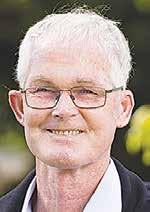

“I don’t know what happened, but in the end they (the Government) got it so fundamentally wrong,” says DairyNZ chair, Jim van der Poel.
He made the comments as DairyNZ lodged its submission to the Government on their proposal to deal with agricultural emissions. As well as making their own submis sion, DairyNZ is a party to the wider submission being made by the vari ous industry groups which make up the He Waka Eke Noa (HWEN) con sortium.
Van der Poel rather kindly sug gested that the officials and Ministers who reviewed the HWEN submission and came up with the counter pro posal, didn’t realise the implications of their changes.
He says when the Government announced their counter proposal, they claimed it was what farmers had wanted, with just a few tweaks. He says, on the face of it, this appeared to be the case, but when his and other groups delved into the detail, it was abundantly clear this was not the case and their response was fun damentally different to the industry
proposal and clearly not fit for purpose.
“You never quite know what happens in government. It would seem that a lot of people got involved in the pro cess who were not involved in the ini tial discussions with us,” van der Poel told Dairy News
“Remember our initial proposal that was put to government was a collab oration of thirteen organisations: ten industry-based, a representative of the Federation of Maori Authorities and two government departments, being Ministry for Primary Industries (MPI) and the Ministry for Environ ment (MfE).
“They were active participants in the process when it went forward to government. In our view, the final proposal which everyone signed up to was finely balanced and it was fit for purpose,” he says.
But van der Poel says the changes made turned what HWEN had pro vided into a fundamentally different proposal. He says he’s got no idea of
how, on what basis and who made the changes. He says, in subsequent discussions when the implications of the changes were relayed back to officials, no one refuted their argu ments.
“If you look at some of the potential conse quences that come out of their proposal, it has quite an impact on NZ’s potential export earnings going forward and also on rural communities – that’s pretty random. If they would accept our proposals, there was a really good chance of hitting the right environ mental targets but not having the disastrous consequences.
“The government proposal puts the reaching of targets as the number one priority above all else, so it’s pre pared to accept some carnage in the rural community as long as the tar gets are met. Whereas we have taken a totally different approach, which would incentivise behavioural change with farmers and still hit the targets and not have the impact on rural communities,” he says.
quality NZ sourced milk.
THE COMPANY behind a fledgling milk plant at Otorohanga in Waikato is focusing on specialised protein for its stage one development.
Happy Valley Nutrition executive chairman Kevin Bush told the company’s annual general meeting last week that they have identified an opportunity in the marketplace for a dedicated milk process ing facility manufacturing MPC85 – a milk protein concentrate from high
Bush says MPC85 is a high value ingredient used in elderly and medical nutrition and is aligned with its strategy and con sumer trends.
“Happy Valley has always stated that our ambition was to be a manufacturer of high-end nutritional dairy prod ucts for the global market, and MPC85 helps deliver against that ambition,” he says.
“This brings simplic ity and focus to the exe cution of Stage 1 of our master plan.”
Happy Valley has been
struggling to raise capital for the project.
Bush points out that MPC85 brings sev eral benefits, including 45% reduction in capital
expenditure to $180m.
It also means a shorter construction period and would allow the new plant to process its first milk in 2024. Bush says focus
DAIRY WOMEN’S Network (DWN) is partnering with train ing organisation Agricademy and its brand Get Milking.

The partnership offers DWN members the opportunity to become a trainer for Get Milking’s dairy assistant and relief milking courses, to purchase online and on-farm training for staff and, in some cases, to become a Get Milk ing licensee.
DWN says its focus is on sup porting farmers and utilising the experience of its members and what better way to do that than by connecting with Get Milk ing’s online and on-farm training.
DWN chief executive Jules Benton says her organisation is excited about the partnership with Agri
cademy.
“They listen to the needs of our members and understand what training is needed to ensure that we attract, retain and grow our people to meet the future needs and opportunities in our sector.”
Agricademy estimates the dairy sector needs to train over 7,500 new people each year, as well as retraining or upskilling a simi lar number of people to meet the changing needs of the industry. Its managing director Alister Shennan says Get Milking empowers people in rural areas to access training, and if interested, to become a trainer and/or licensee.
This then leads to increases in the capability and productivity of staff, and contributes to the success
of dairy farming businesses, he says.
“We are really pleased to be part nering with DWN so their mem bers can help co-create targeted and specialised training content for New Zealand’s dairy farmers, and some may choose to go on to become Get Milking trainers.
“We are also working with DWN to engage and recruit young New Zealanders to the industry– some thing we jointly believe is crucial for the future of a sector we love”.
Benton believes together the two organisations can strengthen the capability and wellbeing of rural communities by changing the way online and on-farm training is pro gressed.
@dairy_news facebook com/dairynews
ing on MPC85 would also lead to significant opera tional savings leading to higher gross earnings.
“Our due diligence and selection of MPC85 have been supported by a strong positive response from European dairy play ers.
“European dairy is facing several challenges, including rising feed and gas costs due to the Ukraine war, and regula tory intervention to limit potential dairy herd sizes.
“The cost to produce and future reduced milk
supply is offset by con sumer demand for pro tein-based dairy milk consumer products.
“Happy Valley is in negotiations to secure 100% of our MPC85 volume production with a few European dairy play ers,” says Bush.
A 6ha site has been prepared at Otorohanga for the new milk plant. The project has been in the pipeline for several years as Happy Valley sought resource consents and funding. Covid-19 has also delayed the project



by a few years.

The company says it is continuing positive dis cussions with strategic partners to secure fund ing.
Bush says 2022 contin ued to be a very challeng ing year, with Covid-19 lockdown still in place in Australia and New Zea land until May 2022.
“We continue to see long supply chain lead times and rising utility and feed costs, especially in Europe.
“The global ageing demographic trend is going to shape the food supply and requirements in the medium to long term future.
“This will change the prioritisation of food sourcing, manufacturing and consumer demand.
“Protein is a key requirement for elderly and medical nutrition, and dairy milk remains one of the best and most accessible sources of pro tein.”



 FARMER LEADER
FARMER LEADER
Richard McIntyre is the new chair of New Zealand Dairy Industry Awards Trustees.

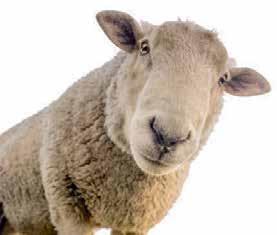
The Horowhenua dairy
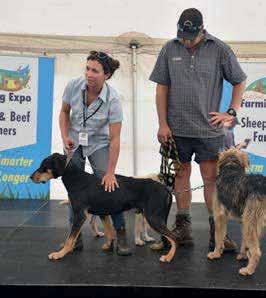
farmer was elected at a recent trust meeting. He replaces Natasha Tere, whose term ends in March 2023.
A NZDIA statement
says the overlapping period will ensure a smooth handover as McIntyre transitions into the role.

He has been involved
with the NZ dairy awards since winning the 2013 Manawatū Share Milker/ Equity Farmer category and has been a Trustee since 2017.
His experience in governance and representation includes roles as an elected member of Federated Farmers representing sharemilkers in the Manawatū/Rangitikei, former chair of the national sharemilkers’ section and he has held a position on the Dairy Executive since 2016.
McIntyre was elected chair of Federated Farmers Dairy group this year and is a Federated Farmers board member.

He is an elected member of the Wellington Fish and Game Regional Council and is the Wellington appointee of the Fish and Game New Zealand Council.

McIntyre says he is excited to begin his role as NZDIA Trust chair while the programme is in a stage of change.

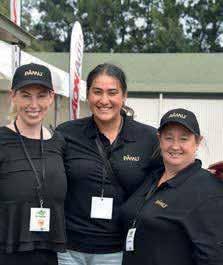
“The awards programme must continue to change and evolve to ensure relevance in an everchanging dairy industry,” he says.
“The programme’s core role is to promote and celebrate excellence in the New Zealand dairy industry and what that actually looks like is continually changing.
“We need to continue to adapt and evolve to ensure the programme remains what the dairy
from the beginning will give New Zealand farmers the skills and abilities needed for the years to come.”
McIntyre is pleased to be carrying on the work Natasha Tere began.
“Tash and I share the same vision of what the awards needs to be,” he says.
“Tash was exactly the right person for the past few years and she was awesome at guiding the trust and awards through those unprecedented times and making the difficult decisions when needed.”
NZDIA general manager Robin Congdon says Natasha has been chair during a challenging phase in the programme’s history with Covid-related adversities, and has been focused on driving change and leaving the organisation fit for purpose and in good stead.
“I am looking forward to working with Richard who has a lot of governance experience, knows the programme well and is future focused,” says Congdon.
“Richard has been instrumental in encouraging change to keep us relevant and focused on what’s important to sustainable dairy farming.”
Entries for the 2023 Awards programme are
WITH NIWA predict ing a hot, dry summer, dairy farmers are being encouraged to consider once-a-day (OAD) milk ing as a low-cost strategy to minimise the impact of dry conditions on next season, while looking after their cows and their team.
NIWA has recently released its predictions for the upcoming summer months, with the North Island in for above aver age temperatures, near or below average rainfall, and near or below average soil moisture.
Perrin Ag senior con sultant Rob Brazendale says, while predictions are just that, and they don’t know exactly how the season will play out, it is prudent for farmers to


start planning now for a dry summer.
“One strategy that is under-utilised, particu larly on unirrigated North Island dairy farms, is once-a-day milking.
“Reducing milking fre quency to once-a-day from Christmas onwards
has been found to have considerable benefits including better cow con dition, less heat stress, a small reduction in feed demand, and a much more enjoyable summer for the on-farm team.”
A DairyNZ trial where cows were milked OAD
from Christmas onwards found these cows had a quarter Body Condition Score (BCS) higher than cows milked twice a day, which flowed through to improved reproduction and milk production the following spring.
Milk production
dropped 13% per day at the time of switching to OAD. However, because two thirds of the sea son’s production had been achieved by the time of the switch, this equated to a 5% reduction for the full season.
Brazendale says one argument against using OAD is the impact on somatic cell count (SCC).
“Farmers with herds that have higher SCC would need to manage the transition carefully as SCC could double for a few days after the switch.”
He says others can learn from those who have successfully imple mented a OAD strategy.
“It is best to make the transition earlier rather than later. If the switch is made while the cows
are still milking well, say at 1.5-1.7 kgMS/cow, the impact of increasing SCC is mitigated by higher milk volumes. And again, if cows are milking well and feeding levels are maintained, the decline in milk production tends to be reduced. Avoid the temptation to reduce feed allowances because the cows are being milked OAD.”
He says planning now for options to reduce feed demand going into the summer should be a pri ority for dairy farmers.
“We should expect a period where feed supply will not meet demand.
“Options for dairy farmers to balance this equation fit broadly into two strategies: increase feed supply and/or reduce
CHINA’S SWAY over what New Zealand dairy farmers get paid for their milk has been on display this year.
Dairy prices on Global Dairy Trade (GDT) have tumbled in recent months as the Chinese Government again locked down cities as part of its zero-Covid policy.
However, the latest GDT event broke a run of three consecutive price falls: the price index rose 2.4%, while key whole milk powder (WMP) prices posted a 3.1% rise.
Overall and WMP prices remain down 18% and 19% respectively on the same time a year ago.
Westpac senior agri economist Nathan Penny says the positive result follows an easing in Covid restrictions in China.
He notes that Chinese dairy demand had been progressively weak ening over the year on the back of the soft Chinese economy.
“However, the loosening of Covid restrictions recently may signal a more pragmatic approach to Covid
being adopted by Chinese officials.”

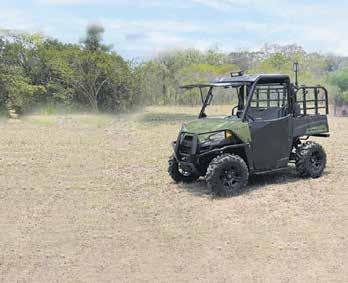
When the Chinese economy is booming, NZ dairy farmers tend to benefit.
Penny expects the Chinese econ omy to grow by 6% over 2023 from a soft 3.5% over 2022.
He says this pickup in the Chinese economy and looser Covid restric tions should translate into improved Chinese dairy demand over the year ahead.
But ASB economist Nathaniel Keall believes dairy prices won’t fully
recover until the Chinese economy picks up. “We don’t expect prices to make a more sustained recovery until that Chinese demand comes back –and that doesn’t look imminent.”
Keall notes that alongside ultratight global supply, aggressive pur chases by China helped fuel the massive gains in dairy prices seen over early 2021.
This largely kept them high over the first part of this year, so the sub sequent absence of strong Chinese demand has been sorely missed.
demand.
“Increasing feed supply normally means increas ing the use of purchased feed. While this strategy has served dairy farmers quite well in recent years, the terms of trade for pur chased feed appear less favorable this season.
“Feed costs are high at around 40-50c/kgDM down the throat and a $9/ kgMS plus milk price is looking less certain.
“Our advice to farm ers is to do the maths, use realistic figures for milk responses to feed, allow for wastage and don’t forget about the hidden costs of feeding out, including time and depre ciation on machinery.
“As the saying goes: plan for the worst and hope for the best.”
“As we’ve highlighted over numer ous publications, the lack of Chinese demand is being driven by a softer domestic picture: a strict anti-Covid regime and slowing economic growth more broadly have meant the outlook for household consumption in China has weakened considerably.”
ASB recently revised its fore cast milk price for the season from a record $10/kgMS to $9.40/kgMS.
Westpac is forecasting $8.75/kgMS for this season and $10 for the follow ing season.
“Farmers with herds that have higher SCC would need to manage the transition carefully as SCC could double for a few days after the switch.”
adry summer.
Damien Roper says the move towards a more environmentally friendly way of farming has been a win-win.
Roper, who runs his family farm with wife Jane and son Jack, was recently rewarded for his efforts at the Taranaki Regional Council Environmental Awards, winning an award for Environmental Lead ership in Dairy Farming.
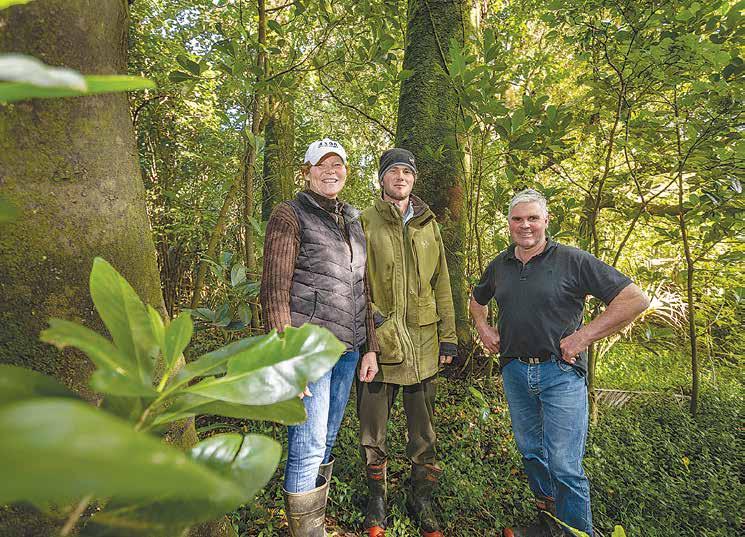
Of the award, Roper says he and his family are honoured to have received it.
“We were very hum bled to even be consid ered for the award and then we were very hon oured and really appreci ated the award from the TRC [Taranaki Regional Council],” Roper told Dairy News
He says it was a “solid recognition of what we’re doing on farm and in the environmental space”.
“We’re planting all these thousands of trees and… you’re often think ing ‘is this right?’ but the recognition from the TRC absolutely says, in listen ing to the other award
winners, we are on the right journey, we’re on the right pathway.”
Roper says that path way to on-farm sustain ability has proven to be an exciting one and one he and his family needed to be on.
They started plant
ing on the 280ha property around 2008-2010, Roper says, but really ramped it up in 2015/16, starting to plant 1000s of trees.
“Last year we targeted 10,000. This year we’re targeting between 20,000 and 25,000 so we are ramping up.”
Roper says this has led to native flora and fauna returning to the property.
“The thing we’re seeing is a lot of native birds coming back quite quickly and the flora and fauna have all flourished,” he says.
In 2020, a nursery was
set up on-farm which specialises in eco source seedlings. It now puts out 25,000 to 30,000 seed lings each year.
Roper says some of those seedlings are gifted to the local community, but most are planted onfarm.
“It’s a sort of a nurs ery. I didn’t really [know] how it was going to go… I learned a lot and we’ve now been fortu nate enough to be able to employ a person for 15 to 20 hours a week to help me out there.”
He says the biggest
hurdle was making the leap towards being more environmentally friendly on farm.
“We lowered our stocking rate and thought we were going to go broke… so that was a challenge and a bit of an uncertainty to drop our stocking rate and soften our cow numbers. It was the best move we ever did, because the produc tivity went up 25% and all our animal health bills dropped,” he says.
He says that by lower ing the stocking rate, the farm has been able to ride out some of the extreme weather events to hit the region.
“It was a no-brainer and it just made the farm ing side of things easier and more environmentally friendly.
“That was a big jump and we’re seeing the ben efits of that.”
He says that in farming smarter, it’s been good for both the environment and their bottom line.
“It’s a win-win,” he says. “It’s not rocket sci ence, you don’t need a specialised major and a degree in what we’re doing.”
@dairy_news facebook com/dairynewsFONTERRA IS eyeing an increase in lactose production.
The co-operative has just invested $40 million in a move to help concen trate whey permeate at its Tirau site to make it more efficient to transport to other sites to produce lactose.

It’s a move the co-operative says is a positive step forward, creating better value return than the ethanol produced previously at the Tirau site.
During the dairy season’s peak, the plant produces up to 2 million litres of milk each day.
According to Fonterra general manager Central North Island Tony Maclean, 2.5 million litres of ethanol is also potentially stored there, mean ing the plant is designated as a major hazard facility.
Maclean says that when the Tirau plant was built, there were benefits to converting lactose into ethanol.
“When the plant was built, the benefit of generating ethanol was primarily… set up reduce the amount of lactose that went to a wastewater treatment plant,” he told Dairy News
Maclean says that at that time,
harvesting the lactose as ethanol was seen as better than sending it on to wastewater treatment ponds.
He says that now, however, lactose
produces more earnings for the cooperative than ethanol.
“Ethanol has limited usage. I mean, they made industrial grade eth
anol there which was made for things like solvents and sanitisers where lac tose can be used in a whole raft of pharmaceutical applications.
“The profitability from lactose as a product was greater than ethanol was.”
Maclean says the investment also means a lot for the co-operative in terms of its sustainability goals.
“We have a massive energy pro duction per year,” Maclean told Dairy News, adding that energy production totalled 15,000 megajoules per year.
He says the move away from eth anol production towards lactose pro duction will see reductions in CO2, water usage, wastewater and general waste. “So, it’s some pretty impressive numbers around those reductions.”
Maclean says there’s great value for money in the move as well.
“If you look at spending our shareholders’ money on remediat ing an asset to be compliant, around making that redundant and investing money into a brand new asset, with a slightly different product mix… the savings from that as well as the ability to generate lactose, we have the abil ity to reduce energy, reduce carbon, reduce water, reduce wastewater and waste,” he says. – Jessica Marshall

MATAURA Valley Milk has embarked on a major project to fully electrify its plant near Gore onto “100% renewable energy” by November next year.
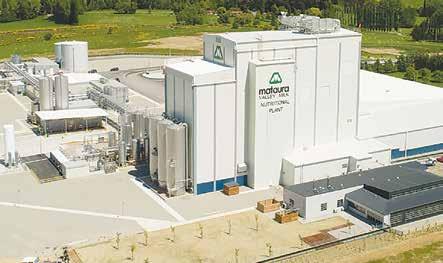
MVM chief executive Bernard May says “Project Recharge” will be a huge milestone for the indus try, making MVM the first dairy company of its size to make the transition, possibly in the world.
Central to the proj ect is the installation of a modern high-pressure electrode boiler capable of producing steam at up to 40 bar pressure to supply heat to spray driers and other processes.
It will replace a very modern coal boiler installed when the plant was built only a little over six years ago.
But May says the coal
boiler typically burns about 30 tonnes of lignite a day through the season, so the project will allow MVM to eliminate 22,000 tonnes of CO 2 emissions annually.
Electrode boilers achieve very high effi ciency by passing cur rent directly through the water itself rather than through a discrete heating element. While some are already operating in the dairy industry, none pro duce such high pressure, says May. The technology did not exist six years ago.
“It is just the right thing to do, given the technology that’s now available. It’s the right thing to do for our people, it’s the right thing to do for the brand, and for the community.”




He says the company had the foresight six years ago to allow for addi tional electrification so that infrastructure already
existed. It has worked with the local lines com pany PowerNet on distri bution agreements that will accommodate the extra load.
May says the plant is already the most modern with a lot of efficiency already designed in, such as recovering water from the milk drying operation.
Machinery such as forklifts are already 100% electric. May says the
project is aligned with the company’s mission of being New Zealand’s most sustainable dairy com pany by creating a highly sustainable supply chain and “the lowest footprint that we can for our cus
tomers”.
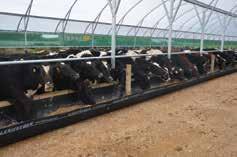
MVM is now about 75% owned by the A2 Milk Company, with most of the balance held by the China Animal Hus bandry Group, whose ini tial investment was vital
in getting the company off the ground in 2016.
Project Recharge was recently recognised by Environment South land, being named a spe cial award winner at the recent annual ES Commu nity Awards.
Environment South land chairman Nicol Hor rell said the calibre of nominees was incredi bly high, featuring diverse nominations from catch ment groups and tour ism operators, through to farmers, food recovery organisations and school children.
“They are our envi ronmental innovators and leaders. These people are just getting on with things as Southlanders so often
do, inspiring others and paving the way forward.”

The judges commented that MVM was leading the way in the climate change space, with Project Recharge being “the most significant thing happen ing nationwide in that space at the moment”.
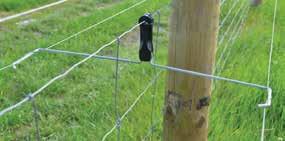
“They have taken some big risks but are doing the right thing environ mentally despite the costs, and are an example of industry stepping up and making a significant change.”
Accepting the award on MVM’s behalf, MVM capital projects manager Scott Waddell remarked that “It’s better for the environment – it’s better for everyone.”
AMONG THE other prize winners in the Environment Southland Com munity Awards were dairy farming couple Dylan and Sheree Ditchfield, who won the Leadership In Farming Award.
The Ditchfields have farmed in Southland since 1997, progressing from sharemilking to equity partner ships to sole farm ownership.
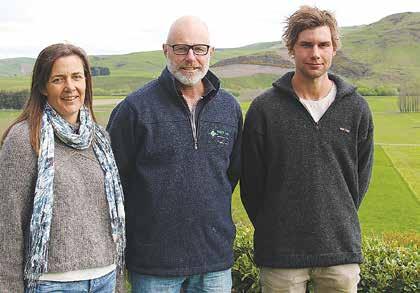
Now based on a 176ha farm at Wendonside known as ‘Freedom Acres’, they regard themselves as guardians of their whenua.
With their stated vision of “Positively Impacting People”, the Ditchfields freely share their journey, methods and philosophies on their company website, and also run a series of business, life and leadership courses they call
“Farming to Freedom”.
Freedom Acres is currently in its first season of once-a-day milking. They are also trialling bale graz ing, a wintering system where hay bales are spaced across a paddock, with stock grazing breaks of hay and pasture throughout the winter. The system aims to reduce nitrogen leaching and improve soil health and pasture regeneration, helping towards lowering the farm’s envi ronmental footprint.
The judges commented that the Ditchfields were inspirational and real leaders in the farming sector, with the philosophy of people being at the core of their operation. “This approach is good for the cows, good for the soil, good for the water and good for the people.”
SLOW PASTURE
growth over the last couple of months, com bined with a wet Octo ber and lack of sunshine, could see cows short on crucial energy, fibre and protein as mating gets into full swing across the country.
Ken Winter, a grain technical support man ager, says this could have a detrimental effect on next year’s calving and milk production.
“Pasture growth was slow in September and October has followed suit,” he says. “Lots of rain and a lack of sun shine means there is less feed. What pasture is there, is lower in energy, digestibility and lower in sugars.
“There are plenty of farms with mud and pug ging too, which is unusual for October, and little or no supplements shut up yet.”
At this time of the year, the energy demands on a cow are at an alltime high. The physical exertions of pregnancy, calving and now milk pro
duction have taken a toll on her energy reserves.
It is critical to bring her energy levels up, not only for milk production, but for reproduction. If a cow’s energy intake is
"Hassle free travel for mature travellers’’
• FAR NORTH & BAY OF ISLANDS (4 spots available)
7 days, depart 17 September. A leisurely coach tour of the Far North including the new Hundertwasser Art Centre and day trip to Cape Reinga.
• EAST COAST & NAPIER (6 spots available)
8 days, depart 21 September A unique and exciting tour around the East Cape and return via the Northern Explorer train
• CHATHAM ISLANDS DISCOVERY
8 days, depart 20 October A special place for a safe and relaxing close to home all inclusive holiday.
• BEST OF THE SOUTH ISLAND
15 days, depart 22 November A spectacular trip around the many highlights of the South Island taking in the wonders of Tekapo, Twizel, Stewart Island day excursion, the Milford Sound and Queenstown. Overnight cruise on the Milford Sound
• NEW PLYMOUTH 'CHRISTMAS LIGHTS' 5 days, depart 23 December A Christmas get away featuring the magnificent light display at Pukekura Park along with some great sightseeing during the trip.
• WAIKIKI BEACH & HAWAII CRUISE
11 days, depart 25 May 2023 A 'Pride of America' cruise for 7 nights with a Waikiki highlights 3 day stop over including Pearl Harbor and Oahu round Island tour.
• TAHITI & SOCIETY ISLANDS CRUISE
10 days, depart 21 July 2023 Set sail on board Le Paul Gauguin for an unforgettable journey to discover idyllic sands and atolls. Tour includes flights to/from Papeete.
For full details
Phone 0800 11 60 60 www.travelwiseholidays.co.nz
of our customised min eral mixes with increased levels of Iodine, selenium, and copper along with extra vitamins as needed.
lower than her output, her body will find the missing megajoules of metabolis able energy MJME from within her own system. Body fat and protein will be mobilised to make milk, but the cost of doing so will be high. Body con dition will be lost and so will her ability to con ceive.
Winter says his Grain Corp team has seen dairy farmers using a lot more supplementary feed this season to fill the gaps.
“While typically many dairy farmers are behind last year’s production, there are many that are doing record volumes on the back of feeding more concentrates,” he says.
“These results demon strate how important it is to add the right supple ment to your herd’s feed ing regime.
“Due to the high cost of feed right now, some farmers have opted for a lower spec feed or reduced feed intake.
Unfortunately, in many cases this had led to reduced production and lower margins.
“While cost saving can help profitability, missed production on a $9.50/ kgMS payout could make the situation even worse.”
Winter says recent bad weather means cows will need extra mineral sup plementation as they head into mating, such as some
“There will be herds and groups of cows that haven’t calved down in optimum condition and may have lost more con dition than usual post calving.
“These cows will now need extra attention and feed, or in some cases should be put on once-aday milking to give them the best shot at getting back in calf.”
He says high qual ity bypass fats are also an effective way to improve reproductive performance by providing a concen trated and readily avail able energy source.
“Feeding them extra during mating can be a real saviour if optimum intakes aren’t being met.”
FORMER FONTERRA senior staffer Wendy Paul has been appointed the new chief execu tive of specialised training pro vider Growing Future Farmers.

Paul, who was director cul ture and wellbeing at Fonterra, will lead the GFF programme into the next phase of growth.
GFF provides specialised industry training for industry graduates to boost their career pathways.
Paul says what attracted her to the role was the chance to directly impact the industry at a point of strategic need.
“I’ve had 18 great years with Fonterra and have worked across the entire agrisector value chain,” she says.
“During that time, I’ve talked with many farming families around kitchen tables, and I’ve heard what matters to them.
“One thing has stayed with me: they are worried that the next generation of family don’t want to continue the tradition of farming.
“I saw more than a few tears over that potential break.
“That’s why I went for the CEO role at Growing Future Farmers. GFF is providing career pathways for succession and intergenerational stability in our farming communities. I want to help them do it.”
A solid foundation of prog ress already exists within GFF.
From the original 2020 pilot programme involving 10 stu dents, the 2022 intake stands at 60, and in 2023, 80 students are expected to take up placements on 80 farms in 10 regions across the country.
Further growth is needed and
the GFF board believes Paul has the experience and credibility to take the programme through its next phase.
“Wendy has the team-build ing skills to lead our 10 region ally-based liaison managers,” says GFF board chair Brad Tatere.
“From her corporate experi ence, she knows how to maintain relationships with key stakehold ers, and with GFF there are quite a few: students, farmers and farm managers, government depart ments and industry-based pro gramme funders.
“A lot of people have to be on the same page for GFF to con tinue its growth and success. Wendy is the person to help them share the same purpose and work together.”
For Paul, the next phase of progression has several clear markers. To date, GFF has developed career pathways in sheep and beef, but an appetite for succession planning exists across other sectors. Paul knows the work of GFF has caught the attention of several industries.

“Succession planning is a problem across many sectors and dairy, horticulture and viti culture are saying, ‘Please bring your student development pro gramme over here’.
“My role will be to help GFF upscale to meet these wider needs.”
During her 18 years in the agri sector, Paul has worked offshore with consumers and is adamant that New Zealand farming offers the world a unique value proposi tion: grass-fed, sustainable farm ing from a country that really does care about the land and the animals.
CEO
“What pasture is there, is lower in energy, digestibility and lower in sugars.”Ken Winter, Graincorp says lots of rain and a lack of sunshine means there is less feed around for cows. Wendy Paul
“What’s next for us is buying some land,” says van Heuven.
EVEN THOUGH it seems unobtainable for many young farmers in today’s dairy industry, there are still some who are set on owning their own farm.
Glenn and Georgie van Heuven, currently 50:50 sharemilkers just out of Matamata in the Waikato, are working hard to achieve their goal.

Glenn van Heuven has always wanted to go dairy farming.
“Growing up on the farm it is proba bly ingrained in you. I’ve always enjoyed farm life, driving tractors, the cows, I enjoy milking – it is quite therapeutic.”
The couple are milking a split-calving herd of 420 Friesian/Friesian cross cows in a system 5 on 100ha owned by Sid and Dellas Anderton. They run their young stock off farm on a lease block, along with some dairy grazers.
Georgie works off farm at Rabobank which helps to support the farm busi ness.
“We’d like to do some thing for ourselves, that is our end goal. We’ve diversified by purchasing two investment proper ties. They have helped us to build equity, which will hopefully help us on our path towards farm own ership.”
Alongside their own investments, they are thinking about an equity partnership structure when the time for pur chasing a farm arrives.
Van Heuven is also a believer in the benefits of learning from and con necting with the wider industry, through attend ing off-farm events like those run by Smaller Milk and Supply Herds (SMASH), to grow their knowledge and build their chances of success.
“It is worth going to SMASH events as they are something differ ent to the events run by other organisations, the speakers are differ ent, and if one doesn’t fit your needs, the next one might,” he says.
“And there is a bloody good lunch at the end. The networking is another benefit; someone might know someone with a
job. It is good to get out and about and see what other people are doing on farm.”
The van Heuvens
would like a large enough property to justify hiring a worker and to have the option of running bull beef. Their preference
is to stay on the smaller milking herd end of the spectrum.
“If you stay smaller you know your cows indi vidually, they are not just a number,” says van Heuven.
“You know their per sonality, they have their own identities. The larg est herd I milked was around 750 cows, and I didn’t enjoy being tied to the shed for hours in the morning and afternoon –there’s more to farming than being stuck in the cow shed.”
Van Heuven is not dis couraged by the com pliance challenges the industry is facing, and is prepared to adjust the way he farms to cope.
Being a system 5, he may need to make some
changes.
He believes most farm ers take pride in their land, and appreciate the value of adding plant ing in areas like riparian zones, for practical and aesthetic reasons.
“It is a bit of an unknown, but we have to do what is needed to keep operating. I think it is harder for the older gen eration who don’t want to deal with the paperwork. We just want to do the best with what we have. Most farmers want to do the right thing.”
In the meantime, the van Heuvens are keeping a close eye on the farms coming onto the market, so when the time comes, they will be ready to open the next chapter in their farming career.
ORGANISERS OF National Fiel days say the Hauora Taiwhenua Health and Wellbeing Hub has tripled in size for this year’s event.
The health and wellbeing initiative has been a feature at the event for the past five years now and is an impor tant pit stop for visitors every year.
Fieldays works with Mobile Health to bring together a range of health experts and organisations in one area. Visitors can receive health advice and a range of checkups including blood pressure checks, blood sugar level testing, hepatitis C testing, and skin cancer spot checks among others.
In 2021, participants in the hub gave over 722 free blood pressure checks, 334 kidney health checks and 673 skin spot checks, of which 54 were found to be suspicious and needed further testing. Participants in the hub can also connect visitors with support networks across the country for vari ous health conditions.
Ensuring that rural communi ties have the same health and well
being opportunities as those that live in urban areas has always been a cor nerstone for the NZ National Fiel days Society, says chief executive Peter Nation.
“It can be difficult to get people from our farming and rural commu
nities in to see medical professionals and that’s an issue that we really focus on when building this hub each year,” he says.
Nation says they have increased its size this year because there is so much interest in the information and
checkups you can get.
“We’re so pleased to see such a huge amount of interest from our vis itors, and we’re thrilled that the Hub has such a large footprint.
“Part of the growth is due to an increase in the Neurological section
of the Hub, which sees several organ isations situated together to focus on this key Health issue.
“Too often we hear these stories of people in our rural communities not taking the time to see a doctor or health professional because they live so remotely or are too busy on the farm, to take time out to get med ical advice.
“We believe that the most impor tant asset on any farm are the people that work on it. So don’t miss this opportunity this year. Make sure you’re farm fit and get a check-up at Fieldays.
“We suspect you will always make time for a WOF or service for your vehicles, now this is your turn for a WOF. We suspect quite a few our valued exhibitors may also take this opportunity to have a quick checkup.”
The Fieldays Hauora Taiwhenua Health and Wellbeing Hub is a onestop shop for everything related to physical and mental health and well being.
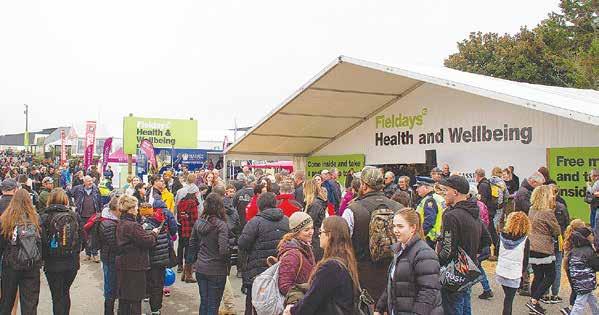
“And there is a bloody good lunch at the end. The networking is another benefit; someone might know someone with a job. It is good to get out and about and see what other people are doing on farm.”Glenn and Georgie van Heuven, currently 50:50 sharemilkers are working hard to achieve their goal of farm ownership.
THE LATE expansion of Three Waters to Five by Minister Nanaia Mahuta seems to have caught her own Cabinet colleagues out, with even the Prime Minister’s office taking a while to get its spin straight on this one ‘Noth ing to see here, you are just confused’ is now the mantra
Three or Five, the more troubling aspect of Mahuta’s water work is probably the Te Mana o Te Wai statements which seem to allow Maori to lay claim, with no apparent parameters, to local water of any kind and all related economic “aspirations”
Apart from Newstalk ZB, media have largely ig nored this and the implica tions for other water users such as farmers
MEMBERS OF THE Climate Change Commis sion will meet leaders of Groundswell, in a sign that the Government might fi nally be realising the lobby group’s influence Commission members will travel to the South Island to meet with Laurie Paterson and Bryce McK enzie
The Groundswell lead ers will get their chance to air their grievances on the Government’s draft ag ricultural emissions pricing proposal and He Waka Eke Noa, which will tax farmers for the emissions created on their farms
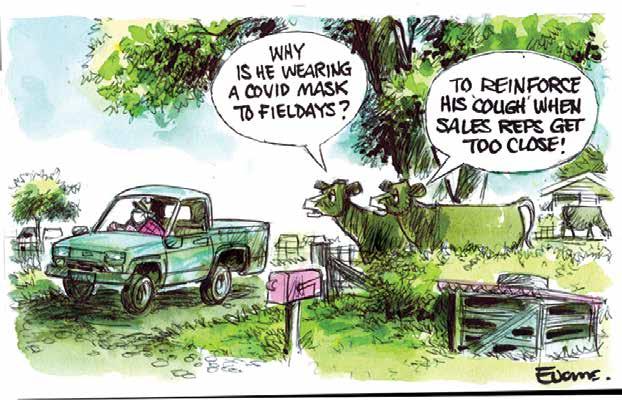
Groundswell recently presented a petition opposing a tax on food production, with 106,000 signatures, to Labour Min sters The Prime Minister has refused to meet the group
A DAIRY ice cream, that doesn’t come from a cow Yes, you heard right!
Food giant Unilever is planning a dairy ice cream that uses milk that doesn’t come from a cow
The company is work ing on a process called precision fermentation that uses substances like yeast and fungi to produce milk proteins in a vat A product could be available in about a year, according to Andy Sztehlo, head of Unilever’s research and development in ice cream
If successful, Unilever could be the first major food company to create an ice cream made from cowfree dairy, dubbed labgrown milk, in a burgeon ing industry dominated by smaller startups
A consumer giant like Unilever developing a pre cision fermentation version of one of its major brands makes it feasible that the technology can scale up and be cost-effective
Dairy cows that chomped on industrial hemp pro duced milk that contained the psychoactive com pound THC, as well as CBD and other cannabinoids, according to new research published Monday in the journal Nature Food
The animals’ behav iour changed too: They yawned, salivated, ap peared unsteady on their feet and even had red eyes, the researchers observed
The findings raise further questions about the future viability of feeding industrial hemp to livestock, a practice that is currently outlawed in the US because of concerns about cannabinoids making their way into the nation’s food supply chain But hemp is nutritious, cheap and widely avail able, which is why farmers and ranchers are curious about any potential ef fects of feeding it to their animals
AROUND THE traps, rumours are flying as who scuttled the so-called joint agri sector response to dealing with agricultural emissions.
Two government departments, Ministry for Primary Indus tries (MPI) and Ministry for Environment (MfE), were both part of the partnership which came up with an agreed solu tion and put this to the politicians and officials. The farming industry groups trusted the departments and, when they put in their proposal, they had every reason to believe that the deal had effectively been done.
Not so. It seems that a whole new lot of officials, or maybe the same ones as well, and then the politicians started to get their grubby little hands on two years of hard work and nego tiation and put their spin on the proposal.
Do such people know much about agriculture? For exam ple, do they believe they’ll find a cryptorchid in a glasshouse? Who knows, but the honest brokers of HWEN must be won dering about the credentials of the people or political motives behind the Government response.
Agriculture Minister Damien O’Connor has stuck to the line that a simple fix is possible. One hopes he’s right, but if he isn’t, there will be no need for an Agriculture Minister in the future – but maybe a Minister of Carbon Forestry.
It would seem senseless that MPI would not work in farm ers’ interests. They are a well led organisation and their chief executive Ray Smith is respected and universally liked by the agri sector. The suspicion is that the problem lies with MfE and there are rumours flying that the two departments are not at one over HWEN, but of course no one is saying or even whispering this.
It is also fair to say that while the farming sector is going about trying to work with Environment Minister David Parker, the relationship is testy, as is the relationship with MfE.
In the last few weeks, there has been compelling evidence to prove the initial HWEN proposal was fine and quite a com promise on the part of the ag sector. Sadly, interference – polit ical or otherwise – is setting NZ on one of the most bizarre paths in its history.
All this raises the question: can you trust a politician? Famous Russian leader Nikita Khrushchev once said, “Poli ticians are the same the world over – they promise to build bridges even when there are no rivers”.
AUCKLAND SALES REPRESENTATIVE: Stephen Pollard Ph 021-963 166 stephenp@ruralnews.co.nz
WAIKATO SALES REPRESENTATIVE: Lisa Wise Ph 027-369 9218 lisaw@ruralnews.co.nz
WELLINGTON SALES REPRESENTATIVE: Ron Mackay Ph 021-453 914 ronm@ruralnews.co.nz
SOUTH ISLAND SALES REPRESENTATIVE: Kaye Sutherland Ph 021-221 1994 kayes@ruralnews.co.nz
THE CONSULTATION period for the Govern ment’s emissions pric ing plan for agriculture is closing as I write this.
Since its unveil ing last month, Labour’s plan based on the He Waka Eke Noa’s part nership report but heav ily tweaked, has drawn nothing but derision and a stock standard refusal from farming sectors and entire regions.
With just cause.
One size regulations like the above are not fit for purpose — never have been and never will be.
Moreover, it joined the raft of regulations (pro posed and enacted) on our rural communities and ag sector.
Since Labour took office, I’ve been at a loss to see why agen
cies like the Ministry for the Environment (MfE) and Ministry for Primary Industries continue to push these ‘one-size fits all’ policies.
Regulating, without any thought given to the impacts of what they’re introducing or how they will be implemented.
A recent example is the many southern farm ers refusing to apply for resource consents from their regional councils in order to comply with MfE’s intensive winter grazing regulations.


That’s because the pro cesses, to enact the regu lations which took effect on November 1, aren’t in place yet.
We know they want change, but the way things are being done, makes even a dog’s break fast look appetising.
When I began dairy farming in systems were
similar. But even back then, there were differ ences. Dairy farming was largely pasture-based without a lot of bought in feed and limited nitrogen fertiliser.
Today NZ farms are
either bovine or ovine, plus a mix of deer, alpacas and other animals. Pork and poultry farmers have their own challenges.
In the past fort night, I’ve visited three extremely different farm
ing operations.
A beef lot where all the feed is brought in, a sheep and beef opera tion mixed with produc tion forestry and finally a pasture-based biologi cal dairy system with few
purchased inputs. So from harvesting and carrying food on the first farm, to cows, beef and sheep doing the harvesting on the other two.
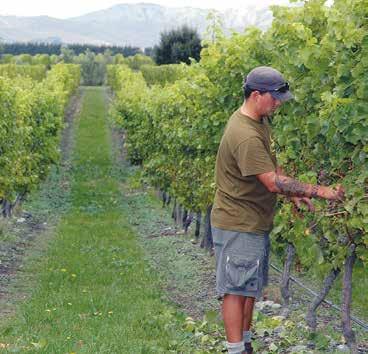
All farms are part of catchment or sub-catch ment areas, with wideranging operations, allowing rural commu nities to work together solving their unique envi ronmental needs.
It makes absolute sense and is a suitable place for iwi and farm ers to solve the challenges evolving from our landbased systems.
How the varied indus tries involved in He Waka Eke Noa arrived at a model which incorpo rated not only the above systems, but a range of others including horticul ture without any rumi nant animals, is quite a thought process.
Especially when farm

ers just want to put on their boots in the morn ing and, after taking care their animals, plant a shelter belt of trees rather than ticking boxes (virtu ally or literally) to comply with the next chore on the Government’s job list.
After many years in the industry, I know all farm ers, no matter what part of the sector, are under stress –stress borne from nonsensical ideas with no idea of the impact on our food producing families.
Never has there been so much red tape to con tend with, and so much contempt for those who tend the land yet contrib ute more than 50% to our economy. It’s heart-break ing.
• Barbara Kuriger is National’s MP for TaranakiKing Country.

THE RECENTLY released NIWA weather outlook for this summer makes interesting reading. They are forecasting above average tempera tures for the whole coun try, with normal to below normal rainfall for most regions. The exception being the East Coast of the North Island which is predicted to have normal to above normal rainfall.
Hotter days with less rainfall increase the risk of severe feed short ages and many farmers are becoming concerned about their summer feed supply. The warm wet winter and the cool slow spring meant increased pugging on many farms and a lot less grass silage has been made. High prices for bought in feed makes growing crops on farm or on lease/runoff blocks an attractive option.

Traditional summer crops have included tur nips, chicory or rape. While in some systems these crops may help mit igate summer feed short ages, it is now getting late to plant them. Farmers therefore should consider
one of two crop options. These are either greenfeed maize or a forage sorghum/sudan grass hybrid (e.g. Bettagraze or SSS)
Greenfeed Maize Maize is a tropical grass. It has high water use efficiency and tends to grow well in dry sum mers when other crops are struggling. While maize is best known for its use as silage it can also be a very valuable greenfeed crop. The feed value for greenfeed maize is in the range of 10.310.8 MJME/kgDM, with higher energy levels being achieved as the grain content increases. Less mature crops can have crude protein levels as high as 16% but this drops to 8-10% as the cobs fill.
Crops can be break fed
or chopped using a maize harvester or a flail-type mower. Feeding behind an electric wire reduces crop wastage from trampling. Greenfeed maize has the advantage that if it isn’t needed because there is enough grass, it can be harvested for silage, stored and fed when it is needed. Greenfeed maize can be fed to both dairy and youngstock and it can be grown throughout New Zealand.
There are two cau tions with greenfeed maize. Don’t feed young or stressed crops with out checking nitrate levels and limit access to mature crops which have high amounts of grain present. Given a choice, animals are likely to gorge them selves on cobs and this may lead to acidosis, or grain-overload.
These hybrids pro duce good yields of mod erate quality feed in a relatively short time frame and are an excel lent option for summer feed in warmer districts. Sorghum and sudan grass hybrids are genu ine summer loving plants and shouldn’t be planted until the soil temperature is 18°C and rising. Usually planting takes place from mid-November onwards. Because of their rapid growth, crops can be first grazed or harvested (at 80 -100 cm in height) as little as 35 - 45 days after planting, with further reg ular grazings afterwards.
There are different forms of these summer grasses. For example, Bet tagraze is a forage sor ghum x sudan grass
hybrid with a high sugar content, fine stems and a high leaf-to-stem ratio. Super Sweet Sudan (SSS) is a sudan x sudan grass hybrid which provides finer leafy stems and excellent regrowth poten tial. If you are unsure what would work best, give your merchant a call and they will be able to guide you. As is the case with greenfeed maize, if the feed is not required, the crop can be harvested as silage or hay and stored for later feeding.
As with greenfeed maize, feeding either Bet tagraze or SSS comes with an important note of caution. It is advised that farmers test forage sorghum x sudan grass hybrids for nitrate and/or prussic acid levels prior to feeding or ensiling. If the levels of nitrate or prus sic acid in feed are high, they can be managed. However, it is important to talk to your local vet or animal nutritionist for feed management advice.

Finally, one of the big advantages of both green feed maize and forage sorghum/sudan grass is that farmers can make relatively late planting decisions and still get rea sonable yields. Greenfeed maize and forage sor ghum/sudan grass hybrids can be planted right up to Christmas if extra feed is needed. If you are con sidering growing one of these products this summer, feel free to con tact your local merchant or Pioneer Area Manager for advice.
• Ian Williams is a Pioneer forage specialist. Contact iwilliams@genetic.co.nz
“Hotter days with less rainfall increase the risk of severe feed shortages and many farmers are becoming concerned about their summer feed supply”.
While maize is best known for its use as silage it can also be a very valuable greenfeed crop.
WHEN THE door slammed shut on New Zealand in March 2020 it also closed the gate to one of the viability funda mentals of the country’s livestock industry – stock auctions.
Until then, the sale of livestock had primar ily been conducted either on-farm or at stock yards but the announcement of a state of national emer gency and nation-wide lockdown sent a ripple across the livestock indus try.
March is a time when, traditionally, stock auc tions ramp up to meet the demand of dairy, sheep and beef farmers to buy and/or sell stock so any disruption to that pattern had the potential to have a real impact on-farm, says long-time stock agent and general manager for NZ Farmers Livestock, Bill Sweeney.

“At the time, farm ers were under the pump to move stock. Many had just come through a tough drought with lingering impacts.

“Feed and grass was tight on many farms. Winter and dairy change overs were approaching and this, combined with long processor wait times and schedule movements,
meant there was plenty of demand to get trade moving.
“Thankfully we were already advanced in the development of an online auction platform. We hadn’t planned on launch ing it so quickly, but the nationwide lockdown saw us work around the clock to refine and launch it so farmers could continue
to buy and sell once the country went into Level 3.”
In a first for New Zea land, NZ Farmers Live stock launched a hybrid online auction platform on 20 April 2020, effec tively reopening yards for normal livestock trading.
Walton farmer, Lance Baker, recalls that their first on farm auction of
“There was so much uncertainty during those early days of Covid around what you could and couldn’t do but thankfully NZ Farmers Livestock had it sorted, enabling us to get on and do what we do best –growing quality bulls.
“Initially the bulk of bidders still attended the sale, but as confidence has grown in bidding and buying online, the num bers have changed so, in 2022, online bidders dou bled compared to 2021.”
Karapiro farmers, Rich ard and Christine Lans daal breed Jersey bulls which are sold each year at the Lynrich Jersey bull sale, Richard recalling their relief at being able to continue to supply bulls to the market.
“The demand for qual ity yearling bulls didn’t stop when the country went into lockdown so it was great that to have an online auction plat form and protocol which allowed our annual sales to continue.”
Sweeney said that farmers are now well accustomed to having choice when it comes to selling or buying livestock.
“The lockdowns increased demand for companies to provide cli ents with choice in the way they sold or pur chased goods and this is very evident in agriculture where farmers are often geographically isolated.
“We’re proud that our closeness to the market, and our clients, meant we were prepared and able to meet a need when it pre sented itself.
“Most of our sales continue to offer trad ing options to farmers – either on-farm, at the stockyards or online.
“This year’s sales are a great example of farmer uptake of the online option with the number of online bidders up by 50% on last year.
“Market confidence is also evident in the record prices we regularly achieve for our clients,” Sweeney said.
Donovan Croot and Sophie Cookson are living the dairy farming dream in Taranaki as 50/50 sharemilkers of a Holstein Friesian herd.


The couple is passionate about breeding, thanks to the influence of several mentors they have met along the way – starting with Donovan’s uncle, Colin Foley.
“He played an integral part in my love for farming, as I visited him on farm as a child and accompanied him to breeders’ days early in my career,” Donovan says.
At 22, Colin found Donovan an opportunity as a dairy apprentice in Taranaki and 14 years later, he hasn’t looked back.
By his fourth season Donovan was herd managing a large corporate farm and working towards an agribusiness diploma, while Sophie completed a vet nursing diploma at Otago Polytechnic and worked for a few years for Coastal Veterinary Services in Kaponga.
In Donovan’s fifth year farming, the couple went contract milking for three years with Bruce and Honey Grindlay. The Grindlays allowed them to rear their surplus heifers on-farm, which they then leased out, helping to grow Donovan and Sophie’s equity.
“That is what allowed us to consider sharemilking, because we owned 80 cows ranging from yearlings through to in-milk cows by that time,” Donovan says.
They both considered it a worthy investment to buy cows from established profile herds and then build on those bloodlines, so in 2019, they bought 100-head of cattle from Jim and Sue Webster’s Waiau/Taramont herd.
The Waiau Trust stud was all registered Holstein Friesians and the former top BW and production herd in the country.
The couple had met the Websters while sharemilking in Tikorangi.
“Jim took Donovan under his wing and shared
his passion,” Sophie says.
“When they eventually sold us the herd in 2019, we not only purchased an exceptional herd but
we made great friends in the Websters and still continue to share our genetics (Taravalley) and family time together,
DONOVAN AND Sophie have some exciting goals for the future.
“We just bought our first bit of land from our incredible farm owners and are building our dream home nearby,” Sophie says.
“Our plan is to stay here and continue to farm and deepen our roots within our community, encouraging our children and others to succeed.
“Donovan has recently taken on a role as a tutor for Dairy Training Ltd and enjoys shar
often catching up for a good yarn and romp around the farms.
“We are forever grateful to them and
ing his knowledge with others. I am following suit and jumping on board with the team at Cow Manager.
“We hope our roles outside of farming will help give us alterna tive perspectives outside of our farming endeavours.”
Clovalley Farms has also taken on an exciting new role this season – silver sponsor and organiser of Calf Club NZ.
“We hope to share the pas sion of calf care and showing with children all over New Zea land, and we are in the process
consider them a part of our Clovalley family.”
Donovan and Sophie’s herd is still in the top 1% nationally for BW & PW.
DONOVAN CROOT and Sophie Cookson – with children Estelle (7), Penelope (5) and Thomas (3) – live at Manutahi, between Hawera and Patea in South Taranaki. They are sharemilking for the Taumaha Trust, owned by Neil and Helen Walker.
They peak milk 190 cows on 61ha through a modern 30-a-side herringbone; the farm is a “good little self-contained unit”, with plenty of support land in close proximity to the milking platform.
They run a system 4-5 farm, which is new ter ritory as sharemilkers. In their first season they relied on grass, silage and limited palm kernel (PK) through a drought. It yielded a 400 kgMS/ cow average production, which was a record for the property at a total MS of 83,000kg.
However, with the introduction of maize grain, canola meal, tapioca, distiller’s grain, soy meal, soy hulls, vitamins and minerals, last season the herd pushed to 118,481 kgMS (620 kgMS/cow).
The couple has noticed, since being on their fully-feeding journey, that conformation and ud ders are becoming increasingly important.
“We can’t have cows that cannot carry the milk,” Donovan says.
“This season we are aiming for 680 kgMS/ cow and our end goal is to get over 700 kgMS/ cow.”
For the last two years they have used some overseas genetics, focusing heavily on udders. Mating starts October 10, which includes 10 weeks of AI and no intervention. AI is done by Sophie, as she is a qualified AB tech with LIC. Donovan and Sophie have well-thought-out breeding objectives.
“Our AI strategy is to pick a line-up of our fa vourite Holstein Friesian bulls that offer the traits we are breeding for and use them selectively over the majority of our herd,” Sophie says. “A handful of smaller-framed cows will go to cross bred, as well as a number of contract-mated cows, if we like the matings.”
of choosing some Holstein Friesian calves to campaign this year, too,” Sophie says.
“We love the trainability of the calves and their nature as well as their variable striking coats.”
Donovan says their breeding focus has changed a lot over the years, with Holstein Friesian now being their preferred breed for their farm and system.
“We love the friendly docile nature of the Holstein Friesian breed and just really enjoy work ing with them.”
They use crossbred over the majority of their yearlings to ensure a smooth transition into milk.
“Hopefully, once our heifers get bigger through breeding we can use some easy calving Holstein Friesian semen over them,” Sophie says.
Holstein Friesian bulls that have produced great cows in their herd include San Ray FM Beamer-ET S2F and Mourne Grove Hothouse S2F.
“We strive to produce quality Holstein Friesian cows of a medium size, with good capacity and udder strength with dairy type and style,” Donovan says. “We love a feminine cow with a will to milk, that can harvest grass and is a good converter of blended feed, too. We are breeding our cows to be resilient and have longevity.
“We are aggressive when it comes to mastitis and lameness and are extremely proactive in our animal health approach. It starts with our breed ing and is reflected in our cows and their progeny. This standard also extends to the bulls we are breeding alongside the breeding companies.”
Calving start date is July 18, with around 42 heifers chosen as replacements annually. Sophie says they are loving seeing the young progeny coming through the herd, as they use more Hol stein Friesian genetics than ever before.
“Some of our stand-out calves thus far are by Meander Shot Alibi-ET S3F, Meander SB AliasET S2F, Buelin BM Equator S2F, Dicksons GF Go-Getter-ET, CRV Delta Everton and Tronnoco MH Samba-ET S3F,” she says.
“We are looking forward to mating where I can put my skills to good use, and we get to play matchmaker and improve families within our herd. This year we have chosen our bull team from LIC, CRV and Samen and hope to move towards using sexed semen.”
showed that consistently around half of all highSCC animals tested posi tive for S. aureus. Across the five farms, between 32 and 270 animals were S. aureus-positive, or an average of 86 cows per farm per herd test.




cups put on them could become infected.”
Many factors weigh in on the likelihood of trans mission including shed design, maintenance, and hygiene.
Aitken says although five to ten cows is a ball park figure, it is a fair assumption as something as simple as the hot water wash not working or inad


S. aureus-positive cows and the ability for their immune response to fluc tuate over time.
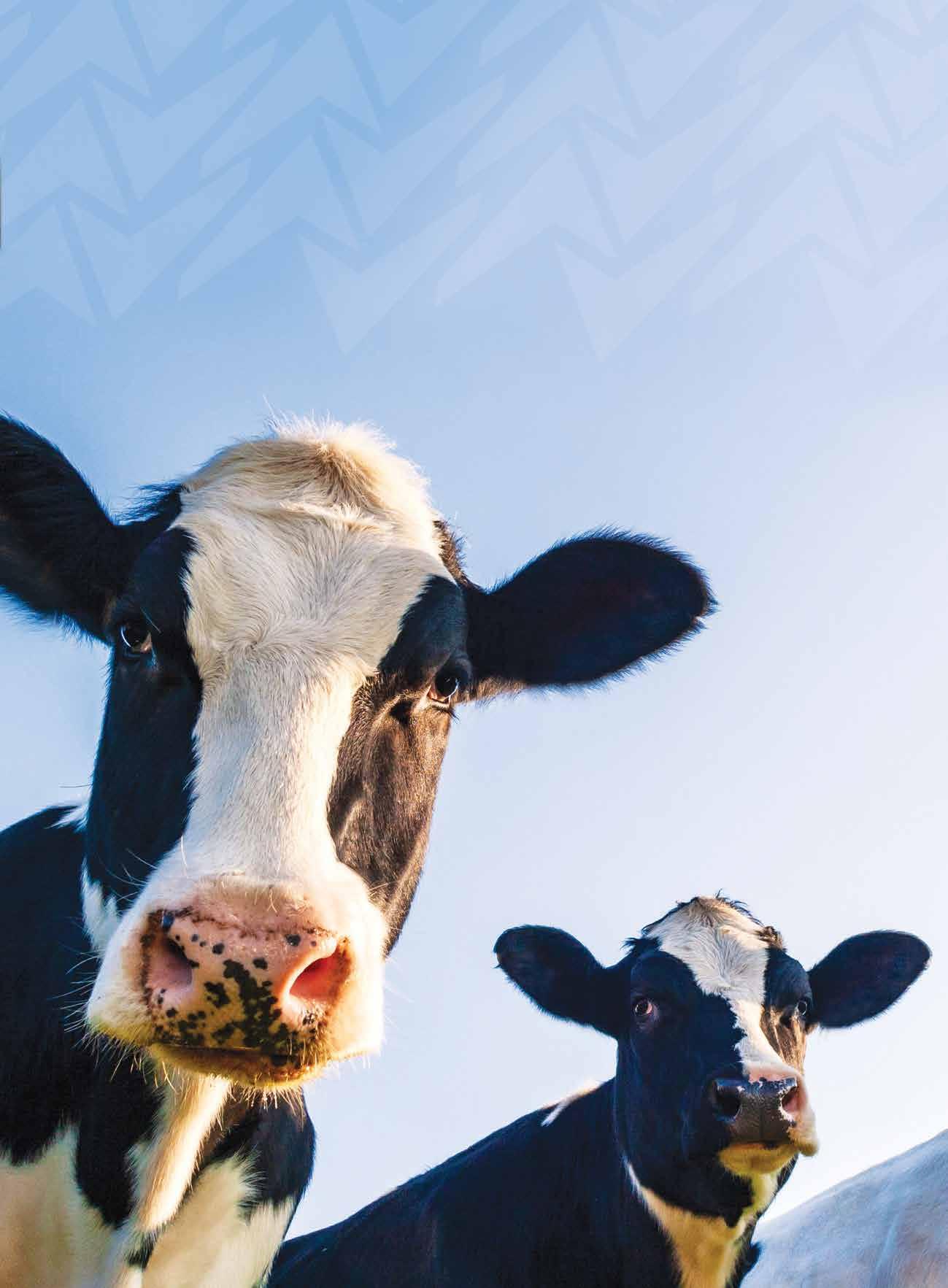

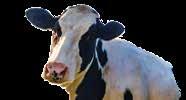

Aitken says perhaps the biggest takeaway around this, is the ben efit of multiple results.
“The nature of S.aureus is such that we can miss it if we rely on a single timepoint test.
“StaphGold definitely
AS A fourth-genera
tion farmer I spend a bit of time looking back and cherishing some of those aspects of foundation, and equally use that history to marvel at the changes we have seen over time.
Technology on farm has been a big mover. In my early days I would have listed a motor on the backing gate and an auto matic vat wash as being breakthrough moments (yes, I do recall firing the couple of 20 litre buck ets of hot water into the lidded vat and jumping in with the scrubbing brush). When I was able to flick a switch, I thought I was made!
Roll forward to 2022 and advancements on farm in the tech space are significant; we now talk of a ‘digitally-enabled farm’. The current wave of wear able technology is gamechanging, as is the likes of the way we manage irri gation use and nutrient management via sensors.
Farm and herd sizes are getting bigger, and the farm owner is often more removed. What this means is that the atten

tion-to-detail and the required husbandry skill set is not always there on farm, and technology is being asked to fill the gap.

The basics and the requirement to focus on the key principles have not changed, but we are creating ways to make life easier and to drive effi ciencies on farm.
The same goes in the herd improvement space. I was an AB technician for LIC in the early ‘90s, and I carted around Daughter Proven Jersey and Daugh ter Proven Friesian (both celebrated contributors to the national herd’s pro ductivity and profitability by the way) but wow the tools in the toolbox have completely transformed
now.
The significant value proposition of short ges tation semen, the avail ability of fresh sexed semen to target more replacements from those better cows, and the fruits of the 20+ year invest ment into genomics are all delivering material out comes.
The bovine diagnos tics area is also extremely impressive with its own list of advancements.
Parentage verification (GeneMark) has been a game-changer for many, and today this is joined on the front line with the opportunity to genotype your replacement heifers – both adding significant selection accuracy to the
puzzle.
Back in the day I often experienced frustration at the identification of a clinical case of Johne’s Disease, and the frustra tion of having to cull a previously healthy cow; I never in my wildest dreams thought we could manage this wasteful dis ease via a milk sample as we do today.
The future will bring change. Environmental considerations are going to shape aspects of the dairy picture, and reg ulation will need to be managed and embraced. Technology and advance ment in a general sense will help.
There is just no doubt that we are currently on
an unprecedented wave of accelerated genetic gain.
The old 10gBW/year rate of genetic gain has been replaced by 19gBW/year. This increase is coming on the back of pulling all the levers within the ‘breeder’s equation’ that fuels genetic gain, with the focus intense within LIC and bearing out well on farm.
Add to this some of the work being done to breed a low-meth ane cow, and the breed
ing programme to assist with heat tolerance, and I have a sense of ‘we have got this’. Day-to-day we will be challenged, and we have certainly felt the brunt of a challenging spring in many parts of the country.
The wider time hori zon will also present chal lenges. As a sector we have always faced these, and I’m proud of the manner with which New Zealand dairy has faced key moments over time

and prospered through the generations.
As I look back, I’m grateful. As I contemplate the ‘now’, I’m content, and as I look forward, I see a future where tech nology will continue to assist, and where the effi ciency of the New Zea land dairy cow will make a compelling contribution.
•
Malcolm Ellis is LIC General Manager for New Zealand MarketsAS AGRICULTURE
moves rapidly into the technological age, the advancement of Irishmade autonomous farm machinery is being enhanced by researchers at Lero, the Science Foun dation Ireland Research Centre for Software and Tipperary-based Abbey Machinery, who recently announced a new research partnership agreement.
Led by Professor Joseph Walsh from the Munster Technologi cal University’s Kerry campus, the partnership says global food produc tion will need to increase by nearly 70% to feed a growing population, meaning the agricultural industry has to become more innovative by using technology to add value to our food supply chains.
“The farmers lead ing the way in adopt ing the new technologies will ultimately accelerate the movement that trans forms the global agri-food system into one which will efficiently feed nine billion people by 2050,” says Walsh.

The partnership with
Abbey would leverage MUT’s innovative Agri Tech research in IoT, AI and manufacturing to develop the next gen eration of intelligent, connected tankers and feeders.
“These machines will be designed to allow remote operation and monitoring by employing state-of-the-art technol ogies and techniques in sensor networks, commu nications, and data analyt ics,” he says.
Abbey Machinery man aging director Clodagh Kavanagh says that as an export-orientated com
pany with 60% of sales coming from overseas, their goal is to research and develop the next gen eration of smart, con nected, and automated tankers and feeders.
“These machines will be designed to allow remote operation and monitoring by employing state-of-the-art technolo gies and techniques in the fields of telematics, sensor networks and communi cations, and data analytics to meet the needs of our customers in Ireland, Brit ain, France, UAE, Saudi Arabia, Australia, New Zealand and Iceland,” says
Kavanagh.
“The research has two strands, namely nextgeneration smart elec tronic architecture for agriculture machinery and software systems for telematics monitoring and remote operation.
“The necessary deliver ables for Abbey Machin ery will be a prototype of the full-stack software platform that monitors the telematics, automates service reminders, and also remote operations that have the potential to lead to the development of new products and ser vices for us globally.”

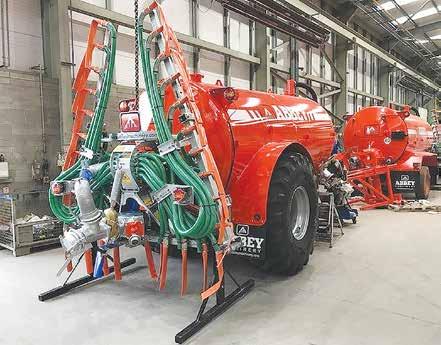

THE BRANDT Group of Companies has announced that they have reached an agreement to acquire the assets of Agrowquip NZ Ltd.

Brandt has 6,000+ employees and more than 170 locations in New Zea land, Australia, Canada, and the US, while Agrowquip is locally owned and operated with eight branches and over 150 dedicated staff in the Auckland and Waikato regions.
The deal will bring together the strong local presence of Agrowquip with Brandt’s existing locations across the North Island, creating a network of John Deere dealership locations that runs from Cape Reinga to Welling ton. The deal will provide the indus try’s broadest support infrastructure for customers throughout the North Island, delivering the products, parts and service they need, wherever they are operating.
“Bringing Brandt and Agrowquip’s locations together on the North Island under one banner allows us to make a more significant investment in the facilities, tools, and people to meet the growing needs of our customers, now and in the future,” says Brandt chief executive, Shaun Semple.
“As a family owned and operated business, we like to put down deep roots, investing for the long term, and
that is our plan here in New Zealand.”
Already an established John Deere agricultural equipment dealer in New Zealand, Brandt’s foray into the con struction and forestry sector is famil iar ground for the company. From humble beginnings with a single loca tion 30 years ago, Brandt has grown to become John Deere’s leading Con struction & Forestry equipment dealer worldwide.
The company owns and operates 130 dealerships worldwide, including 23 John Deere Ag stores in Australia and New Zealand as well as 56 John Deere Construction & Forestry dealerships across Canada. Their extensive expe rience in the agriculture, construction, and forestry sectors will enable them to deliver the quality products and indus try-best support services that New Zea land equipment owners need to help them to compete successfully.

In addition to delivering a full suite of John Deere products, Brandt is committed to providing the best over-the-counter parts availability in the industry, to be supported by an incountry central parts warehouse.
The agreement is subject to due dili gence and customary closing conditions and is expected to close on January 30th, 2023. For more information visit www.brandt.ca – Mark Daniel
HAVING BUILT a strong reputation in the materi als handling sector since 2002, Sri Lankan head quartered GRI Tyres made a move into the agricultural and construc tion markets in 2018.
The company now operates in 17 countries with 1,400 staff, manu facturing their products using pure sustainably grown rubber.
While it has long been the case that round and black are the standard shape and colour for all tyres, GRI has brought a little bling into the game, with their recently released ‘Earth’ range of tyres, which as the name suggests are actually green.

For now, there are two ranges, namely the ‘Green Earth XLR 65+’ and the ‘Green Earth XLR 65’ –the latter represented by a 650/65 R38 size tyre. But it is not just the colour that makes the 65+ range interesting, it also sports an unusual lug pattern.
Said to offer improved on-road added stability,
a longer service life and reduced vibration, unlike traditional tread bar layouts, the Green Earth treads do not overlap in the middle of the tyre. Instead, they are angled and run alongside
one another, creating a “virtual rib” so more of the lug is in contact with the ground.
In addition, the innovative curve of the lug angle at the centre is said to have been
designed for improved fuel efficiency and greater off-road traction.
Bipin Singh, gen eral manager for sales and marketing at GRI, explains that 42% of the green tyres are made
using sustainable mate rials such as biomass and recycled products, coloured green to make them stand out. This green colour is not a coat ing, it is part of the com pound, so the tyres will
remain
The tyres are built with pure natural rubber, highly dispersible silica, recycled carbon black, and reclaimed rubber from used tires. Natural soy
bean oil, which is a sus tainable material, has also been used instead of petroleum-based oil, and the carbon footprint has been reduced as it is pro duced using bio-sourced and recycled materials.
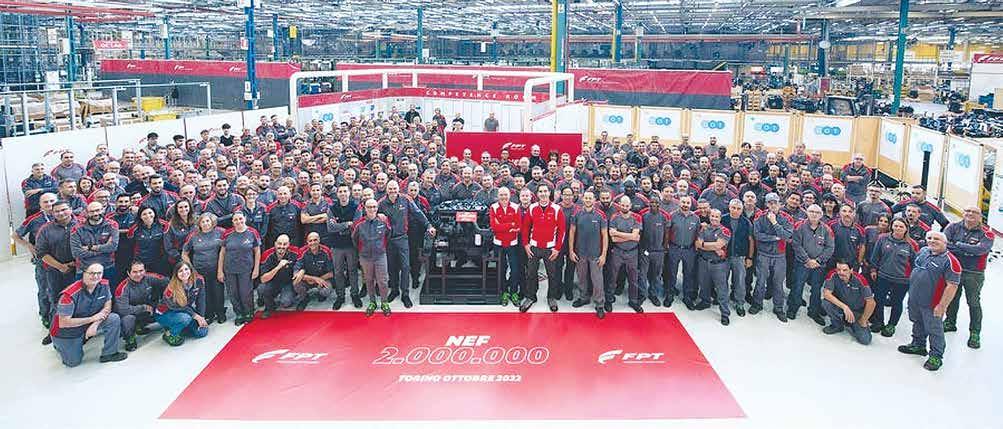
PART
four or six-cylinder configurations, with structural or non-structural design, available in diesel and natu ral gas versions.
Launched in 2000 and designed for the most demanding industrial appli cations, the NEF series is available in
Offered with displacements rang ing from 3.9 to 6.7 litres, with mechan ical and electronic injection systems, the range extends to 1800 different
variations with power outputs from 62 to 570hp (46 to 419kW).
Well known in the agricultural sector with OEM customers includ ing Case IH, New Holland, Claas, McCormick, Landini and Steyr, they also supply the construction industry, powering names like Komatsu.
Said to offer the ability to custom ise its products to customer needs, NEF series engines are also manufac tured at
in Brazil, and Argen tina, allowing the brand to fully meet the ever-increasing demand for reli able power, performance and sustain ability.

WITH LESS than five months until the South Island Agricultural Field Days kicks off, organis ers are feverishly putting the finishing touches to the upgraded Kirwee site and still finding room for exhibitors keen to be part of the South Island’s larg est agricultural event.
Field days committee chairman Hayden Dorman says the field days man aged to just dodge the lockdown bullet in 2021, and 2023 promises to see an even bigger turn out of the latest in agricultural equipment, agritech and products.

“The exhibitors who are either already booked or about to, appreci ate having the space and facilities to showcase and demonstrate their equip ment to visitors who mean business, who are coming because they want to see just how well it
performs in the field,” he says.
Since 2021, organis ers have doubled down, smoothing the site’s net work of paved roads, establishing a new water supply, and expanding the electricity grid through out, providing exhibitors with a reliable, extensive infrastructure to support their stand.
Dorman says inter est among farmers and contractors on displays this year is heightened because of the difficulty many have had in past years trying to secure gear and equipment due to global shipping issues.
“With this starting to return to normal, the field days provide an oppor tunity to really do your homework on what the best purchase decision may be, after some of the challenges in the past couple of years.”
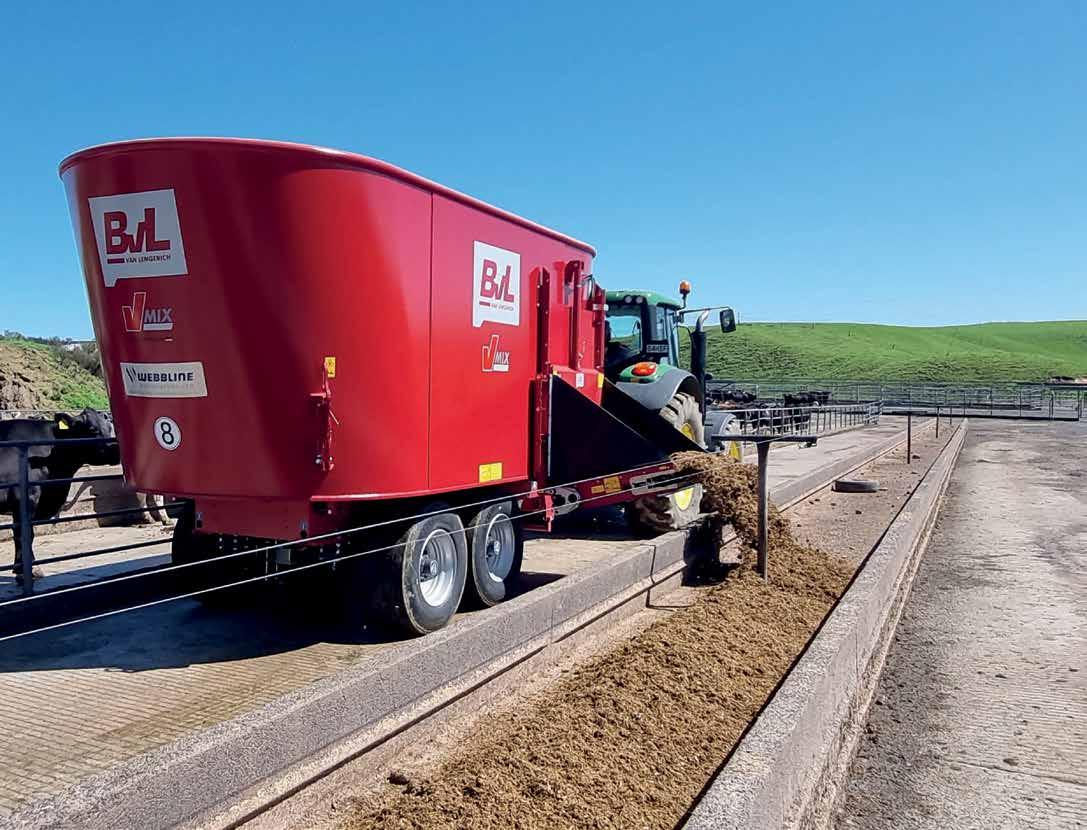
Dorman says the site’s easy access, flat contour and central Canterbury location make it equally popular among exhibitors and visitors alike, while the expansive demonstra tion site is an invaluable addition for contractors and farmers considering investing tens of thou sands into new equip ment.
“The event is wholly
organised and run by volunteers; we all have strong connections to the land either and farm ers or contractors, and an appreciation of what is expected when you come along to an event like this, whether to buy or to sell.”
The organisers have worked hard to keep the event focused and rele vant for farmers and con tractors alike, something
Dorman says has been repaid by having a grow ing core of committed companies that return regularly to the bi-annual event. “They appreciate the diversity and depth of farming and contract ing across the region, the field days are an opportu nity to connect with their loyal customers, roll their sleeves up and really talk about the gear they have,

the gear they may want and get to see it all work ing.”
The South Island Agri cultural Field Days are also supporting a grow ing number of agritech exhibitors keen to show case their latest develop ments, taking advantage of the wide range of crop and pastoral operators throughout the region looking for technology to
optimise fertiliser, water, and land use.
Smart farming tech interest has grown with the lift in connectivity in more rural areas, as the need to follow the multi ple data-flows a farm gen erates also grows.
“We are keen to talk to exhibitors who may still be considering whether to put a stake in the ground at this year’s event,” says Dorman. “Given the growth we have enjoyed in the past, and the strong level of optimism that is in the farming sector, despite its many challenges, the field days are a very cost-effective, enjoyable means to tap into that.”
The field days kick off from March 29, running to March 31 and there is still time for exhibitors to book their site at the event.
www.siafd.co.nz
